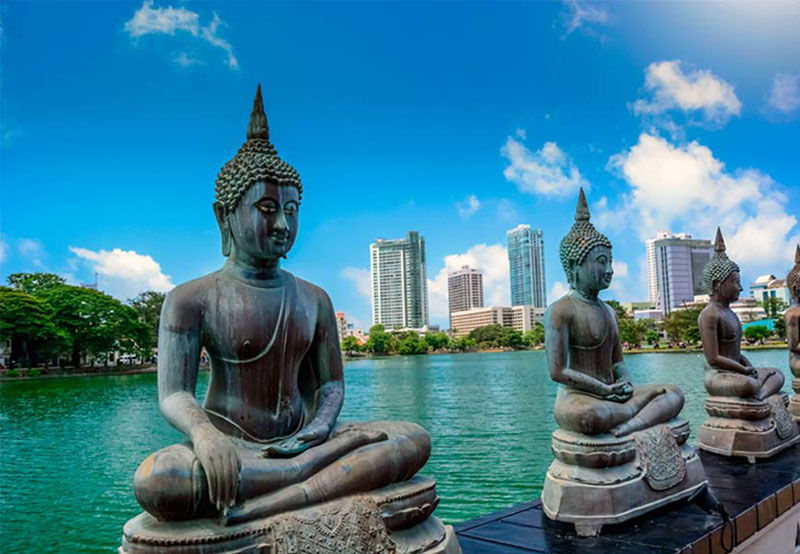With one of the richest treasure troves of natural and man-made wonders and a history dating back to the dawn of civilisation, despite a civil insurgency and tsunami damage, Sri Lanka’s tourism industry has recovered and is booming again The pearl on the southern tip of the Indian subcontinent, Sri Lanka (pop.21 million) is perhaps one of Asia’s richest treasure troves of natural and man-made wonders. Some of these marvels unveil a history of over 2,500 years — the sacred city of Anuradhapura, the cave temples of Dambulla, and the magnificent temples and palaces of the royal city of Kandy. This perhaps explains why despite a civil insurgency which persisted for over two decades and the devastating impact of a giant tsunami inflicting massive damage estimated at over US$ 1.5 billion (Rs.6,750 crore) upon its 1,126-km coastline in 2004, Sri Lanka’s tourism industry has recovered and is booming again. Even though the island republic is experiencing political instability currently, for the tourism industry it’s business as usual. The history of Sri Lanka (once described by author Horace Walpole as Serendip) dates back to the beginning of civilisation. Adams Peak on the island is believed to be the very place where the first eponymous human set foot on earth after expulsion from the Garden of Eden. Legend has it that a large footprint squarely atop this mountain peak is Adam’s. Then there is Adam’s Bridge — a chain of islands linking Sri Lanka to India. It is revered as a viaduct built by Lord Rama aided by the simian god Hanuman in the epic Ramayana. However the official history of the island as recorded in the Mahavamsa or Great History, dates back to 543 BC, which coincides with the arrival from India of Prince Vijaya in Sri Lanka. Some 300 years later the Anuradhapura period commenced with King Devanampiya Tissa as the first ruler of the dynasty. It was in this period that a sapling of the sacred Bodhi Tree, under which Lord Buddha attained enlightenment, was imported into the island from India. The Anuradhapura period, which began in 459 AD, witnessed the construction of Sigiriya fortress during the reign of King Kasyapa (473-495 AD). The Polonnaruwa period, witnessed the transfer of the capital from Anuradhapura to Polonnaruwa in 1073. The famous Venetian explorer, Marco Polo, reportedly anchored in Sri Lanka sometime between 1254 and 1324. Soon the Portuguese Navy landed here in 1505 and occupied the island’s coastal regions. Around that time Sri Lanka had three main kingdoms — Jaffna in the north, Kandy in the central highlands and Kotte, the most powerful, in the south-west. Employing the familiar policy of divide et impera and aiding the Kotte kings to attack and annex neighbouring territories, the Portuguese established their suzerainty over most of the island, except the central highlands around Kandy. However, infuriated by the frequent expeditions of the Portuguese, the Kandy kings enlisted the help of Dutch traders who helped to expel the Portuguese but took over their territories…
The enduring charm of Sri Lanka
